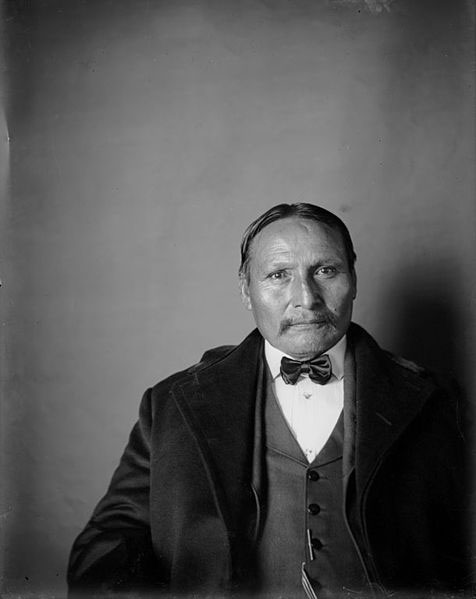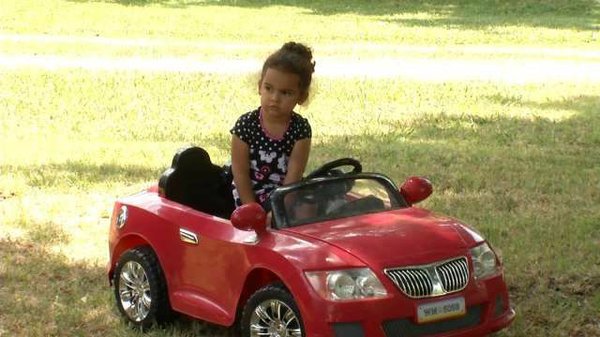The federal government intends to hire private investigators to track down the alleged perpetrators of residential school abuse.

Darryl Dyck
/ The Canadian Press
A First Nations woman cheers while taking part in the Walk for
Reconciliation in Vancouver, B.C., on Sunday September 22, 2013.
Thousands of people attended the walk that wrapped up a week Truth and
Reconciliation Commission of Canada events in the city. From the 19th
century until the 1970s, more than 150,000 aboriginal children were
required to attend state-funded Christian schools in an attempt to
assimilate them into Canadian society. They were prohibited from
speaking their languages or participating in cultural practices. The
commission was created as part of a $5 billion class action settlement
in 2006 - the largest in Canadian history - between the government,
churches and 90,000 surviving students.
OTTAWA—The Canadian
government intends to hire private investigators to track down alleged
perpetrators of abuse in the Indian residential school system.
Aboriginal Affairs and Northern Development Canada is seeking private eyes to track down as many as 1,000 clergy members, former residential school staff, and students alleged to have abused Aboriginal children in the residential school system.
The goal is to give the alleged perpetrators an opportunity to participate in a court-ordered adjudication process known as the Independent Assessment Process (IAP), which helps residential school survivors settle claims for the abuse they endured.
Once located, the former residential school employees will be given the chance to voluntarily participate in the IAP.
“Canada is obligated to make an effort to locate and contact persons named as alleged perpetrators in claims filed in the (IAP),” wrote Andrea Richer, spokeswoman for Aboriginal Affairs Minister Bernard Valcourt, on Thursday.
Richer emphasized that participation is voluntary.
“It is the choice of the alleged perpetrator to participate or not in the IAP process.”
The federal government is required to locate the alleged perpetrators under a settlement agreement reached with Aboriginal groups in 2006. The hunt will take investigators from Nova Scotia to British Columbia and throughout Canada’s North.
Investigators will be asked to locate between 800 and 1,000 of the alleged perpetrators in the first year of a potential four-year contract. Once their targets have been located, investigators will turn over contact information to Aboriginal Affairs. In the event those named in survivors’ claims have died, investigators will be asked to provide proof.
Related stories
It’s not the first time the federal government has deployed private investigators to attempt to locate those named by residential school survivors, but the numbers suggest there are many Ottawa has yet to find.
It’s been estimated that 150,000 children were wrenched from their family homes and put into the federally-funded, church-run residential school system between the 1870s and the 1990s.
Approximately 13,000
former students took legal action against churches and the government
for the emotional, physical and sexual abuse, as well as the
underpinning systematic racism, they endured in the residential school
system.
In June 2008, Prime Minister Stephen Harper stood in the House of Commons to formally apologize for the government’s role in perpetuating the school system.
“To the approximately 80,000 living former students and all family members and communities, the Government of Canada now recognizes that it was wrong to forcibly remove children from their homes, and we apologize for having done this,” Harper said.
“The burden of this experience has been on your shoulders for far too long. The burden is properly ours as a government, and as a country. There is no place in Canada for the attitudes that inspired the Indian residential schools system to ever again prevail.”
The apology was the high-water mark for relationship between First Nations and the Conservative government. That relationship is now strained on a myriad of fronts, spectacularly demonstrated by 2012’s Idle No More protests across the country.
First Nations have also pressed, to no avail, for a commission into missing and murdered aboriginal women. Many, including the Assembly of First Nations, have also lined up to oppose federal plans for new education standards on reserves. AFN Chief Sean Atleo has likened the planned First Nations Education Act to an intrusion into First Nations affairs akin to the residential school system.
The government has
also been criticized — most recently by a report from Auditor General
Michael Ferguson — for not cooperating with the Truth and Reconciliation
Commission, mandated to compile a complete historical record of the
residential school system’s legacy.
“Are whoever the contract winner is going to have access to documents identifying some of these perpetrators? These are documents that the Truth and Reconciliation has to go to court to get,” said Jean Crowder, MP for Nanaimo-Cowichan and the New Democrat’s Aboriginal Affairs critic. “Are they going to have a broad access to documents? Are they going to get more than the TRC gets, because the TRC is fighting to get documents that the government won’t cough up?”
The department has budgeted $521,980 for the first year of the contract spanning from the award to March 31, 2015. An optional second year has been budgeted at $383,000, for a total of $904,980.
Two further optional years have been planned, meaning the search could potentially continue until 2018.





































